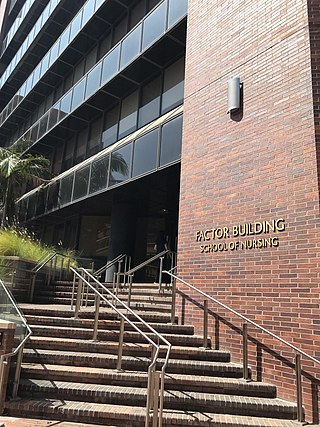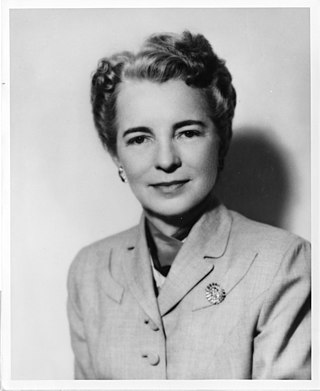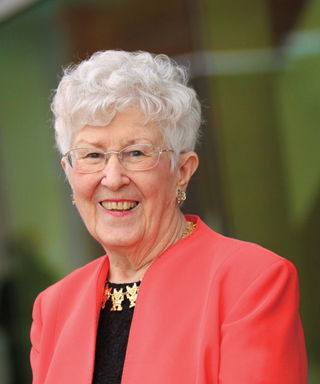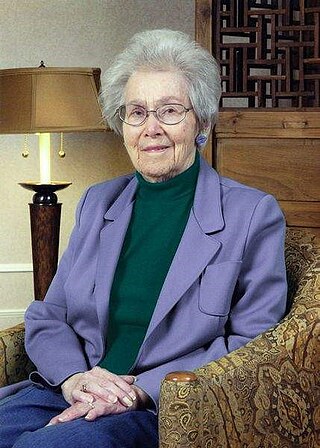
The University of California, San Francisco (UCSF), is a public land-grant research university in San Francisco, California, United States. It is part of the University of California system and is dedicated entirely to health science and life science. It conducts research and teaching in medical and biological sciences.

Texas Woman's University (TWU) is a public coeducational university in Denton, Texas, with two health science center-focused campuses in Dallas and Houston. While TWU has been fully co-educational since 1994, it is the largest state-supported university primarily for women in the United States. The university is part of the Texas Woman's University System. It offers undergraduate and graduate degree programs in 60 areas of study across six colleges.

David Aaron Kessler is an American pediatrician, attorney, author, and administrator serving as Chief Science Officer of the White House COVID-19 Response Team since 2021. Kessler was the commissioner of the Food and Drug Administration (FDA) from November 8, 1990, to February 28, 1997. He co-chaired the Biden-Harris transition’s COVID-19 Advisory Board from November 2020 to January 2021 and was the head of Operation Warp Speed, the U.S. government program to accelerate the development of COVID-19 vaccines and other treatments, from January to February 2021.

The University of California, Berkeley School of Public Health, also called Berkeley Public Health, is one of fourteen schools and colleges at the University of California, Berkeley. The school is currently accredited by the Council on Education for Public Health.

Claire Muriel Fagin was an American nurse, educator, and academic. She was an early advocate of family-centered care, with major contributions to psychiatric nursing, nursing education and geriatric nursing. Fagin was also one of the first women to serve as president of an Ivy League university.

The UCLA School of Nursing is a nursing school affiliated with UCLA, and is located in the Westwood neighborhood of Los Angeles, California. The school is housed in the Doris and Louis Factor Health Sciences Building, known as the Factor Building, on the south end of UCLA's 400-plus-acre campus, adjacent to the Ronald Reagan UCLA Medical Center.
Margretta (Gretta) Madden Styles, EdD, RN, FAAN was an American nurse, author, educator and nursing school dean who conceived and helped establish national standards for certifying nurses in pediatrics, cardiology and other medical specialties. Dr. Styles was the president of the American Nurses Association from 1986 to 1988, and wrote five books and many articles published in medical journals.

Mary Adelaide Nutting was a Canadian nurse, educator, and pioneer in the field of hospital care. After graduating from Johns Hopkins University's first nurse training program in 1891, Nutting helped to found a modern nursing program at the school. In 1907, she became involved in an experimental program at the new Teachers College at Columbia University. Ascending to the role of chair of the nursing and health department, Nutting authored a vanguard curriculum based on preparatory nursing education, public health studies, and social service emphasis. She served as president of a variety of councils and committees that served to standardize nursing education and ease the process of meshing nurse-profession interest with state legislation. Nutting was also the author of a multitude of scholarly works relating to the nursing field, and her work, A History of Nursing, remains an essential historic writing today. She is remembered for her legacy as a pioneer in the field of nursing, but also her activist role in a time where women still had limited rights.
Afaf Ibrahim Meleis is an Egyptian-American nurse-scientist, researcher, and medical sociologist. She is a Professor of Nursing and Sociology and Dean Emerita at the University of Pennsylvania, where she served from 2002 through 2014. This followed her 34-year tenure as a nursing faculty professor at the University of California, Los Angeles (UCLA) and the University of California, San Francisco (UCSF).

Lucile Petry Leone was an American nurse who was the founding director of the Cadet Nurse Corps in 1943. Because the Nurse Corps met its recruiting quotas, it was not necessary for the US to draft nurses in World War II. She was the first woman and the first nurse to be appointed as Assistant Surgeon General of the United States Public Health Service.

Loretta C. Ford is an American nurse and the co-founder of the first nurse practitioner program. Along with pediatrician Henry Silver, Ford started the pediatric nurse practitioner program at the University of Colorado in 1965. In 1972, Ford joined the University of Rochester as founding dean of the nursing school.
Patricia Sawyer Benner is a nursing theorist, academic and author. She is known for one of her books, From Novice to Expert: Excellence and Power in Clinical Nursing Practice (1984). Benner described the stages of learning and skill acquisition across the careers of nurses, applying the Dreyfus model of skill acquisition to nursing practice. Benner is a professor emerita at the University of California, San Francisco UCSF School of Nursing.
Phyllis Noerager Stern was an American registered nurse, college professor and nursing theorist. Stern was known for her contributions to international women's health and for developing Glaserian grounded theory approaches used in nursing research. She held faculty appointments at several schools, including Dalhousie University and Indiana University. She was designated a Living Legend of the American Academy of Nursing in 2008.

Jeanne Quint Benoliel was an American nurse who studied the role of nursing in end-of-life settings. She founded the Ph.D. program at the University of Washington School of Nursing. She was designated a Living Legend of the American Academy of Nursing.
Bonnie Louise Bullough was an accomplished sexologist and author, who helped to develop the first Nurse Practitioner Program in California at UCLA in 1968. Throughout her career, she edited or wrote 30 books as well as 112 published articles.
Judith Wold is an American nurse and educator. She is best known for her work in nursing education as well as global and rural health focusing on vulnerable populations.
Patricia M. Davidson is an Australian nursing educator. She is best known for her contributions improving cardiac nursing and transitional care with a focus on under served populations in a global context, and for her leadership in higher education.
Fannie Jean Gaston-Johansson (1938–2023) was an American professor of nursing and university distinguished professor at Johns Hopkins University. Gaston-Johansson researched health disparities, pain management, and coping strategies in women breast cancer patients. Gaston-Johansson was the first African-American woman tenured full professor at Johns Hopkins University. She previously served as a dean and full professor at University of Gothenburg and an associate professor at University of Nebraska Medical Center. Gaston-Johansson was named a Living Legend of the American Academy of Nursing in 1995.
Geraldine "Polly" Bednash is an American nurse practitioner. She is the former chief executive officer of the American Association of Colleges of Nursing and former head of the association's legislative and regulatory advocacy programs as director of government affairs.
Catherine "Kit" Ann Chesla is an American nurse who is Professor Emeritus and former Thelma Shobe Endowed Chair at the University of California, San Francisco School of Nursing. Her research has considered families and chronic illness.











